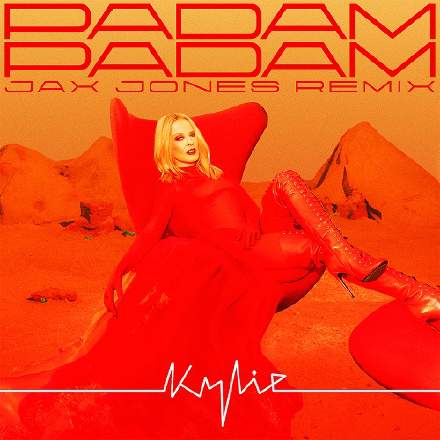
At the end of the last year, while talking about how Sam Smith’s song 'Unholy' had used the comparatively unusual non-diatonic Phrygian Dominant mode, I pointed out that, although Smith had used both of the mode’s available major chords (the triads on the first and second scale degrees), he’d left its two minor chords untouched (the triads on the fourth and seventh degrees). So it’s great to see Kylie’s recent comeback hit upping the Phrygian Dominant ante by building the song around I, bII, and iv chords. And is that even a hint of vii too, in the second chorus at 1:33 and 1:49?
Another lovely detail here, however, is the way the lead vocal line deliberately skirts the scale’s most characteristic interval: the augmented second between the second and third degrees (the notes Db and E in this case). The chorus melody avoids it by simply remaining within a minor-sixth span from E up to C, but the verse takes a much more ear-catching approach, by temporarily sharpening the scale’s second degree to D instead of Db. Even though the Db is banished from the verse backing, the melody nonetheless retains a lovely shadow of harmonic false relation about it which I find very evocative. Again, this is taking advantage of the harmonic/melodic minor scale fluidity that I talked about in relation to both ‘Unholy’ and The Sugababes’ debut single ‘Overload’ – but where those songs both choose to flatten the Phrygian Dominant’s third degree for a descending-melodic-minor flavour (ie. towards regular Phrygian mode), Kylie instead raises the second degree for an ascending-melodic-minor flavour, hinting at another pretty exotic mode, the Aeolian Dominant.
But the thing that really blows me away with this production is the gorgeously sinuous and propulsive synth/sound-design work, especially because the song’s gradual build-up of textural complexity makes it possible for the ear to single out so many of its subtle layers for appreciation. Listen to the first half of the first chorus, for instance, and notice the ‘reverse breath’ sound that builds up to each clap backbeat; the musical variations in the hardness of the main synth riff’s attack; the modulating stereo-image width of the synth notes (the second and fourth eighth notes of each bar in particular usually seem wider); and the vocal-reverb gating on the first, second, fifth, sixth, ninth, and tenth snare hits. Then, we hit the second half of the chorus, with its opening electro-tom fill; the low growling vowel-like synth under the backbeat at 1:04; and some kind of vocoder-style effect on the vocals (most audible on “take me home” at 1:10). It’s a rich tapestry of human-injected organic detail than transforms what could easily have been a fairly pedestrian electronic groove into a living, breathing, rippling musical creature – something wonderfully fluid and dynamic in a genre sadly overpopulated with mechanical automatons.
The time-varying nature of so many of the sounds is also pivotal to the great sense of forward momentum on display here. A fabulous case in point is that warm-sounding rhythm synth that opens the song and underpins the first verse. Not only does the level-pumping immediately add a base-line rhythmic drive, but the sound is also constantly morphing in response to the musical structure, for example the slow increase in spectral density combined with a slow (band-pass?) filter sweep towards the start of the verse at 0:15, and then the little moments of extra brightness in the run-up to various verse downbeats, such as those at 0:18, 0:22, and 0:29.
This is the kind of magical production that seems to reveal new little sonic treasures with every new listen, generating an irresistable urge to just play it again and again and again. Speaking for myself, if I’d bought this on vinyl, I’d certainly have worn it out already!










